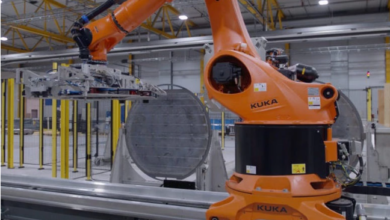Mitsubishi Power progresses with hydrogen storage solutions in the US
Long-duration hydrogen storage is a key enabling technology for the transition to a net zero-carbon energy future.

Mitsubishi Power Americas, Inc. and Texas Brine Company, LLC plan to develop large-scale, long-duration hydrogen storage solutions to support decarbonisation efforts across the eastern US.
Both partners will initially focus on existing sites controlled by Texas Brine and its affiliates and explore greenfield applications. They will explore hydrogen storage in existing and new caverns and detailed engineering and design studies to support hydrogen storage needs.
The project will help Mitsubishi Power’s expands its ability to economically and securely store hydrogen in salt caverns in North America. Texas Brine and its affiliates have a salt presence in New York, Virginia, Texas and Louisiana. Hydrogen has been stored in salt caverns for decades on the US Gulf Coast.
Brine is a mixture of salt and water produced during the solution mining of salt formations used as a critical feedstock in various applications, such as chemical industry, food, deicing, agricultural, industrial, and water softening. The underground repository can then be used to store liquid or gases such as hydrogen.
In a separate development, Mitsubishi Power and Magnum Development are invited by the US Department of Energy’s (DOE) Loan Programs Office to submit a Part II Application for around US$ 595 million for the proposed green hydrogen hub project ‘Advanced Clean Energy Storage Project’ in Delta, Utah.
The green hydrogen hub is part of a broad effort to support decarbonisation efforts across the western US. The green hydrogen hub at the Advanced Clean Energy Storage Project would interconnect green hydrogen production, storage and distribution in the West. This site is atop a massive salt dome in Delta, Utah, and adjacent to the Intermountain Power Project, transmission interconnections to major western demand centres.
If successful, the project will enter due diligence for the potential loan guarantee. If the project reaches loan closing, debt financing from the DOE will support the construction of the green hydrogen hub. It would build over 1 GW of electrolysis facilities producing around 450 tonnes/day of green hydrogen, which would be stored in the Advanced Clean Energy Storage Project’s salt caverns.
The project’s salt caverns will be capable of holding more than 5,500 metric tonnes of hydrogen. From an energy storage perspective, one cavern has the equivalent of 150 GWh of carbon-free dispatchable energy and/or decarbonised fuel that can be used in other industries.
In September 2020, Mitsubishi Power agreed with Entergy to collaborate on bringing decarbonisation projects to Entergy’s utility businesses in four states. During the same month, Mitsubishi Power also secured technical selections for three projects using its hydrogen-ready M501JAC gas turbines:
- The Danskammer Project being developed by Agate Power in Newburg
- The Chickahominy Power Project being developed by Balico in Virginia
- The Harrison Power Project being developed by EmberClear
